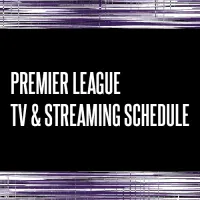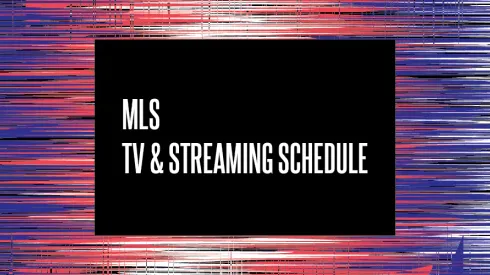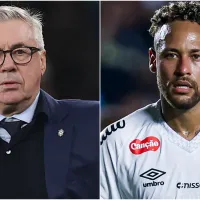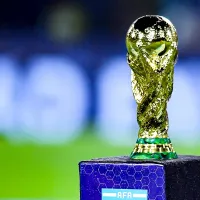MLS TV Schedule
Saturday, February 21
- 02:30 PM ET
- 04:30 PM ET
FC Cincinnati vs. Atlanta United FC (MLS)
- 07:30 PM ET
- 07:30 PM ET
- 07:30 PM ET
- 08:30 PM ET
- 08:30 PM ET
- 08:30 PM ET
- 08:30 PM ET
- 09:30 PM ET
- 10:30 PM ET
- 10:30 PM ET
- 10:30 PM ET
Sunday, February 22
- 07:00 PM ET
- 09:15 PM ET
Seattle Sounders FC vs. Colorado Rapids (MLS)
Saturday, February 28
- 02:30 PM ET
- 02:30 PM ET
- 04:30 PM ET
- 04:30 PM ET
- 07:30 PM ET
- 07:30 PM ET
- 08:30 PM ET
- 08:30 PM ET
- 08:30 PM ET
- 09:30 PM ET
- 10:30 PM ET
Sunday, March 01
- 02:30 PM ET
- 04:30 PM ET
- 07:00 PM ET
- 09:15 PM ET
San Diego FC vs. St. Louis City SC (MLS)
Saturday, March 07
- 02:30 PM ET
- 02:30 PM ET
- 04:30 PM ET
- 07:30 PM ET
- 07:30 PM ET
- 07:30 PM ET
- 07:30 PM ET
- 08:30 PM ET
- 08:30 PM ET
- 08:30 PM ET
- 09:30 PM ET
- 10:30 PM ET
- 10:30 PM ET
The MLS TV schedule features 30 teams. Inter Miami, with Lionel Messi, won the 2025 MLS Cup to become the most recent champion.
The MLS season kicks off in February, with the regular season running through October. The MLS Cup Playoffs follow soon after.
With a total of 30 teams in the league, each team plays a total of 34 games. Seventeen of those are at home, and 17 are on the road for an even split. Almost all games now are on Wednesdays and Saturdays.
However, the major news for MLS is the Apple deal with the league and the launch of MLS Season Pass. There is no more Univision or ESPN for watching games, so FOX’s channels have all TV coverage of the league.
Watch MLS with MLS Season Pass:
Our Pick:Includes: Every regular season game, MLS Cup Playoffs, Leagues Cup, & More |
 |
Whereas MLS is Back welcomes the season, MLS Decision Day is the regular season finale. It features intra-conference games to decide the regular season standings.
In 2024, the MLS season started earlier, and finished slightly later, because of the Leagues Cup. This revamped competition features all MLS and Liga MX teams. The MLS and Liga MX seasons both pause during the summer to make way for the competition.
Special Games
That is something to remember for MLS moving forward. Many of the games are on Wednesdays and Saturdays. Occasional games take place on Sundays. However, this is a benefit that stems from the MLS deal with Apple that is broken down below.
MLS usually stages a “Rivalry Week”, where most matchups feature traditional rivalry matches and/or local derbies.
MLS TV Schedule of Channels
There are major changes when it comes to watching Major League Soccer since 2023.
The availability of MLS Season Pass on Apple is the big one. MLS Season Pass is $14.99 per month or $99 per season, and it has every single MLS regular season and playoff game. There are English- and Spanish-language broadcasts for every game. Moreover, there are French broadcasts for the games involving Canadian teams. Games no longer are available on ESPN+. Additionally, you can listen to home radio broadcasts for a more personal feel.
MLS History
An indication of how far American soccer has come is Major League Soccer (MLS). It has not only made it since its inception in 1993, but it has flourished, becoming a distinct player in the American sports scene. A tale of perseverance, change, and unwavering dedication to promoting soccer in the United States is the story of the league’s history.
A devoted soccer fan would likely tell you that the energy in the stadium is just as important as the game when asked what makes Major League Soccer so special. Roughly 20,000 die-hard soccer supporters who have established their own culture attend a typical game.
Among their rituals include singing the whole match, releasing both blue and black gunpowder, and queuing up twenty-four hours in advance to get the best place. Those enthusiastic spectators have seen a lot of transformation in the 26 years since the first Major League Soccer match.
The Major League Soccer past is not exactly a bed of roses, what with millions of dollars in losses, clubs going out of business, and rule changes in the works.
Idea behind Major League Soccer
Like many previous events, Major League Soccer (MLS) began in the 1990s as a regular league with enormous potential. Its goal was to elevate the standing of soccer in a nation where other sports were more popular.
Nevertheless, doubt, practical difficulties, and a lack of funding characterized the formative years. U.S. and Canadian soccer competitions went through a lot of ups and downs before MLS came around. In the early 1900s, the American Football Association (AFA) set the standard, but by 1924, it had faded from existence.
A year later, in 1967, the National American Soccer League (NASL) was formed. Even though Brazilian superstar Pele’s time with the New York Cosmos gave it a temporary boost in popularity, the fad died out in the mid-1980s.
How did MLS come to be?
Before the United States were awarded the 1994 World Cup hosting rights, however, MLS was already in its early stages in 1993. Since its inception in 1996, the league has been a dedicated effort to create a top-tier professional soccer competition. In their first season, they had 10 teams, New York Red Bulls, Los Angeles Galaxy, and D.C. United among them.
At first, Major League Soccer (MLS) failed to live up to the hype that followed the 1994 World Cup. The difficult road ahead was highlighted by the approximately $250 million in losses experienced throughout the first five years. Even after trying out new rules—like a “shootout” for deadlocked matches—the NFL still couldn’t attract enough American fans.
There was an electric atmosphere in stadiums and living rooms everywhere because of the unprecedented level of competition between the teams. The rivalries between teams become an integral part of soccer culture, bringing supporters together through their love of the game.
Their mesmerizing performances stoked the fires of soccer fans throughout the country as the league progressed and its players improved. In order to establish itself, MLS engaged in strategic planning and expanded gradually.
As the league expanded, more teams joined, more regions were covered, and the infrastructure was upgraded. With the influx of capital, MLS had its golden age. The exhilarating exhibition of talent, strategy, and adrenaline drew in previously skeptical spectators, who soon started to pack stadiums to watch live soccer.
Inaugural season and expansion
In its first season, Major League Soccer (MLS) included 10 clubs from throughout the US. The Columbus Crew, the New York/New Jersey MetroStars, the Los Angeles Galaxy, and the District of Columbia United were among the first franchises. While trying to make its impact on the American sports scene, the league had its fair share of ups and downs in its formative years.
D.C. United and San Jose Clash played in the first match of the inaugural Major League Soccer season. The Clash won in front of a thrilling sellout crowd thanks to a goal scored in the 88th minute. The Major League Soccer lost over $250 million in its first five years, despite all the excitement and momentum from the 1994 World Cup.
Football, basketball, and baseball were the mainstays of American sports before Major League Soccer. Outside of youth football leagues, soccer was seldom mentioned. Major League Soccer’s arrival was a game-changer, bringing the sport to a wider audience in the United States.
Fans throughout the country were able to enjoy the game thanks to the league’s smart marketing and the broadcast matches. Because of MLS’s efforts, soccer went from being a niche interest to a phenomenon.
Important players from throughout the world were involved in this changing dynamic. Fans in the United States were captivated by their unique approaches and great abilities, broadening their sports horizons beyond what they were used to at home. The Major League Soccer (MLS) was able to attract the greatest players in the world because it was endorsed by soccer legends.
An important part of MLS’s goal for success was expansion. The league’s reach grew throughout the years as clubs from places like Portland, Seattle, Chicago, and Miami joined. Not only did expansion enhance the league’s reach, but it also brought in more varied fans and made things more competitive.
David Beckham and “Designated Player” rule
Major League Soccer (MLS) reached a tipping point in 2007, which sent it into an era of unprecedented fame and fortune. With the signing of Toronto FC came sellout crowds, and with the acquisition of the Colorado Rapids by Stan Kroenke, a promise to construct soccer-specific arenas was made. Stadiums were packed to the gills as David Beckham was announced as the league’s first designated player.
The “Beckham Rule,” or Designated Player Rule, made it possible for clubs to pay superstars more than the league’s wage ceiling. The Major League Soccer (MLS) was able to improve the quality of play and the experience for fans thanks to this system, which attracted top-tier players.
MLS: 21st century and modern history
European players were wary about Major League Soccer at first, seeing it more as a retirement league. But all changed in 2023 when Lionel Messi signed with Inter Miami. At this juncture, the league’s newfound competitive advantage became apparent. The number of people tuning in to watch MLS matches has skyrocketed.
Several reasons have led European players to see MLS as a potential career path. One contributing element is the league’s increased level of competitiveness and better playing standards, which were similar to those of the best leagues in Europe.
Playing with both seasoned veterans and up-and-coming stars provided a dynamic that was conducive to development. The appeal of American culture, cultural variety, and receiving soccer score updates were further magnets.
The addition of European players elevated the Major League Soccer (MLS) to a new level of prominence. A merger of playing styles, tactics, and plans resulted from this partnership, which elevated MLS’s competition to worldwide levels. The growth of Major League Soccer from a place of suspicion to respect attracted European stars, who helped propel the league to prominence on a global scale.














